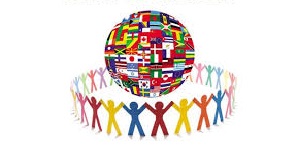Last year, the number of international visitors (staying at least one night) reached 1.3 billion people.
According to the World Tourism Organization (UNWTO), this is 7% more than in 2016. Such performance had not been seen for seven years: since 2010, the sector’s growth was around 4%.
Tourism being strongly correlated to economic activity, the global recovery boosted the desire to travel.
France remains the world’s top destination, with a “clearly positive trend (+8%) after two years of weakness due to terrorist acts,” although the final figures will only be released in the spring.
In July, Jean-Yves Le Drian, the Minister of Foreign Affairs, said he expected a number of 89 million in 2017. A record as well.
Spain even claims to have surpassed the United States in terms of attendance. With 82 million tourists (+8.9% compared to 2016), it is a serious challenger for France.
More broadly, the UNWTO notes that Europe remains the most visited continent in the world. It welcomed 671 million tourists (+8%) last year.
Africa is up by 8%, Asia-Pacific by 6%, the Middle East by 5%, and America by 3%.
For 2018, the UNWTO expects a growth of 4 to 5% in global tourism. The sector is key for local economies. It accounts for 10% of the global GDP overall.


